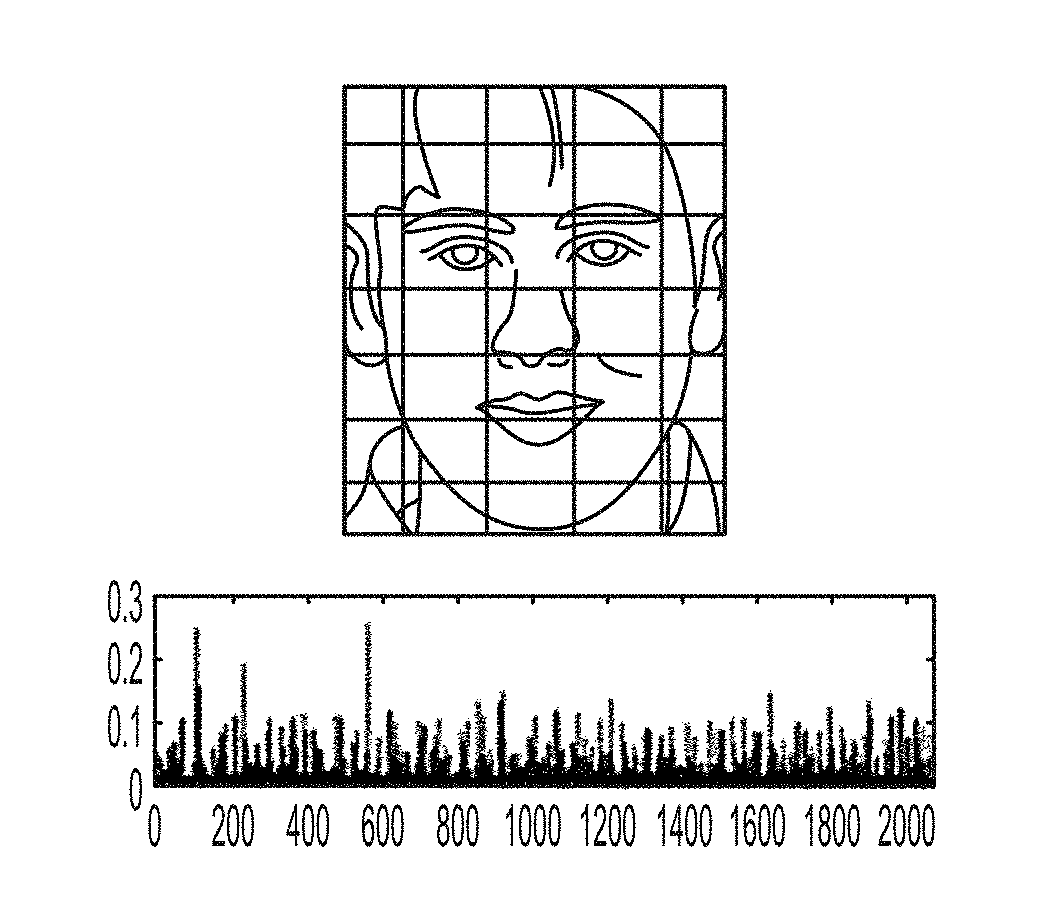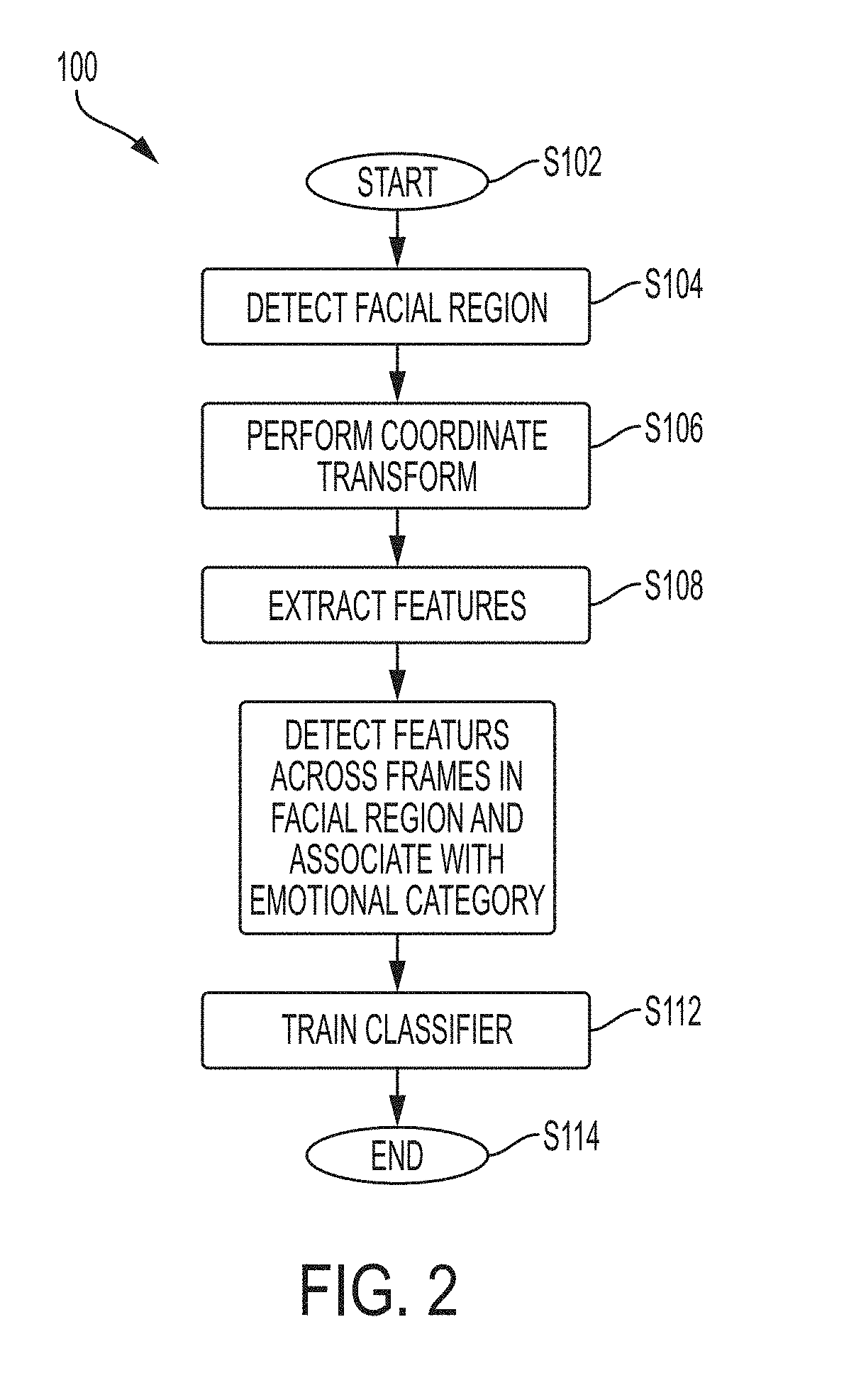Learning emotional states using personalized calibration tasks
a calibration task and emotional state technology, applied in the field of learning emotional states using personalized calibration tasks, can solve the problems of large inter-subject variability, conventional systems are unable to sufficiently detect the involuntary physical traits or manifestations of individualized emotional states or responses, and other expression types are not as universal
- Summary
- Abstract
- Description
- Claims
- Application Information
AI Technical Summary
Benefits of technology
Problems solved by technology
Method used
Image
Examples
experiment 1
Approach
[0076]Over one hundred (100) participants were administered a quiz game on a tablet computer. Each participant had an equal amount of time to answer as many questions as possible. The session was restricted to a fixed amount of time that was unknown to the participant until a final countdown timer appeared on the display screen showing the participant that only fifteen (15) seconds remained. Participants that correctly answered questions were rewarded points based on the difficulty of the question. A reward for the top two scores was given.
[0077]In this experiment, the conventional approach shown in FIG. 1 was implemented on the tablet computer: (1) facial landmark detection was performed using both the Viola-Jones face detection approach in conjunction with the subspace constrained mean-shift algorithm; (2) a face that was front facing and well aligned to the camera was chosen to represent the canonical representation of the face coordinates (eyes, ears, etc.), where all su...
experiment 2
sclosed Approach
[0079]In the second experiment, deviations detected from the normal facial expression of the participant playing the reward-based quiz game were analyzed. For this experiment, a 1-class SVM classifier was trained on the first 15 seconds of the video (roughly 450 frames), then tested on the next 15 seconds (first test set) and then on the last 15 seconds of the video (second test set). In the first 30 seconds, the subject entered his / her name, email address, and read the quiz game instructions. The login phase of the quiz is a no-pressure scenario on the participant. In FIG. 10a, the results are shown for the 15 seconds of the first test set immediately following the training segment. In FIG. 10b, the results of the second test set (final 15 seconds) of the video show that the participant is under pressure. The black denotes deviations from the norm inferred by classification labels given by the SVM classifier. Overall, the deviations increased from 64% to 85% between...
PUM
 Login to View More
Login to View More Abstract
Description
Claims
Application Information
 Login to View More
Login to View More - R&D
- Intellectual Property
- Life Sciences
- Materials
- Tech Scout
- Unparalleled Data Quality
- Higher Quality Content
- 60% Fewer Hallucinations
Browse by: Latest US Patents, China's latest patents, Technical Efficacy Thesaurus, Application Domain, Technology Topic, Popular Technical Reports.
© 2025 PatSnap. All rights reserved.Legal|Privacy policy|Modern Slavery Act Transparency Statement|Sitemap|About US| Contact US: help@patsnap.com



